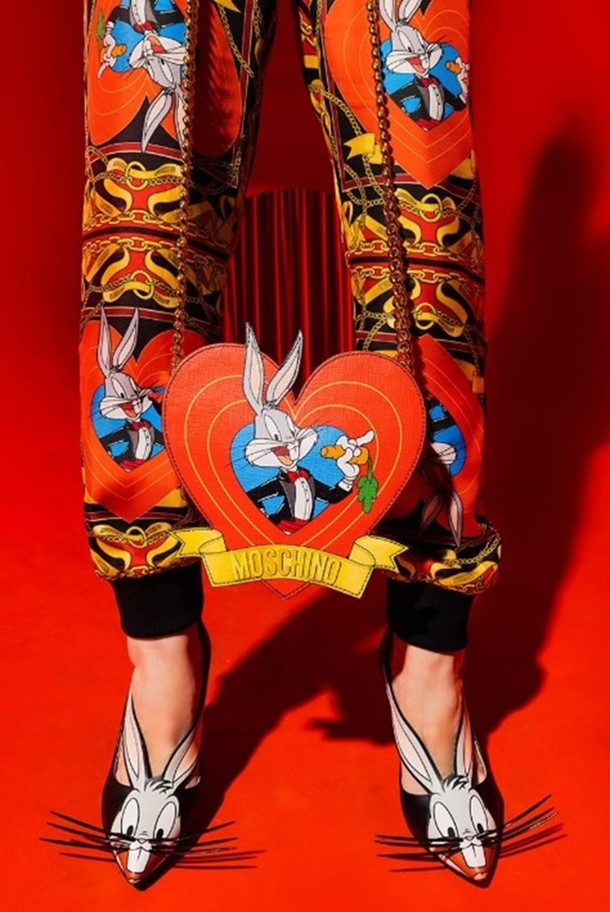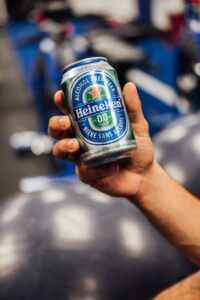January is a month of new beginnings as brands and consumers alike ring in the new year and endeavour to kickstart healthy and productive habits. But in a post-COVID world, does the “new year, new me” mantra still hold up? Or are consumers fatigued by the idea of constant self-optimisation? Plus, brand new innovations from the annual Consumer Electronics Show (CES) point to a future where wellness, sustainability and technology are ever more deeply intertwined. And, as China celebrates the Year of the Rabbit, are there reasons for Chinese citizens to be hopeful?
Here are 3 cultural insights that grabbed our attention in January, with actionable takeaways for brands.
1. COVID-19 looms over the Year of the Rabbit in China

China’s most important holiday, the Lunar New Year, which fell in late January this year, was met with mixed feelings. On the one hand, it offered a chance for relatives to unite restriction-free for the first time since the onset of COVID. In December 2022, the Chinese government abruptly announced the country’s transition away from key parts of its zero-COVID policy after several public uprisings. This news was positively welcomed by many Chinese citizens who had lived under harsh COVID restrictions for three years.
However, the sudden nature of this policy reversal caused cases to rise drastically. The exact scale of the outbreak is hard to gauge as the country is no longer reporting daily infection figures, but the rest of the world is already taking precautions.
Chinese New Year festivities last for 15 days and are often referred to as the biggest global migration of people each year. This year, families gathered to celebrate the Year of the Rabbit – an animal associated with longevity, peace and hope in Chinese culture. But hope seemed to be dwindling already. China’s hospitals were already overcrowded and facing medication shortages. And as millions of workers headed home to celebrate, many may have taken the illness with them to areas with fewer hospitals and less medical equipment and medicine. Analysts have warned of a new wave of infections in rural areas in late winter. As a knock-on effect, the rest of the world may follow suit and reinstate precautionary measures like increased mask wearing. In late December, following the surge in COVID cases in China, a state in India announced that masks would be mandatory in certain public spaces. Some schools in the US also mandated masks in early January.
Could this potentially be the new winter normal? Possibly. But China opening its economy is also a mixed blessing for both Chinese citizens and the global economy. While for the former, a chance to return to pre-pandemic life is in the calendar for 2023, the latter may benefit from the country’s role as a low-cost producer. China’s recovery is predicted to lift global growth due its position as the world’s second largest economy.
Despite the prevailing gloom surrounding the new surge of cases, brands are responding to the chance to resume services in China, whose citizens are predicted to increase consumption after saving a chunk of their income during the pandemic.
Placing the Year of the Rabbit at the centre of their product launches, companies like Givenchy, Max Mara, Dior, Fendi, Burberry, Moschino and many more are launching limited-edition rabbit-themed products and exclusive capsule series to celebrate Chinese New Year. The colour red is another popular motif, given its association with luck for the new lunar year.

See beyond
– The global upheaval caused by China’s abrupt uplifting of restrictions has underlined the importance of Safe Travels, as explored in our Future of Travel report. Despite many countries having gone back to pre-pandemic living and travel standards, precautionary measures are never far away. And the urgency with which different countries have mandated testing on passengers from China shows how hygiene and health measures are still key aspects of travel. Consumers will expect clear and consistent information on vaccination, testing and masks when considering travelling abroad. Ensure your technology is still disease-proof and meets the standards of hygiene and health.
– Brand collaborations that provide a sense of cheer and hope amid the gloom will be appreciated. Consumers will look for quirky Meme Messaging to alleviate their mood. For example, Moncler’s collaboration with Disney’s Roger Rabbit is bound to strike a chord with consumers who grew up watching the iconic character. Similarly, White Rabbit, Shanghai’s popular candy brand, collaborated with international fashion house Coach for a product crossover. Bringing the unexpected together plays on consumers’ desire for surprise. The collaboration also hints at the trend of guochao, which refers to products that incorporate traditional Chinese elements with a modern touch.
2. Consumers swap total sobriety for Dry(ish) January

For many consumers, January is a time to set goals, make New Year’s resolutions and kickstart healthy living and eating after an indulgent holiday season. It’s why Dry January and Veganuary have gained momentum in recent years, challenging people to give up alcohol and animal products for the entire month. But this year, we saw a subset of consumers question the idea of complete abstinence. Instead, they sought a more realistic and less rigid approach.
On TikTok, the hashtag #dryishjanuary has 2 million views, while #damplifestyle has more than 24 million. Posts include self-help videos that outline how to maintain a “damp lifestyle” – i.e. drinking in moderation rather than total abstinence – in order to more effectively change habits and mindsets. In a post from user hana.elson that has had 35,000 likes, the TikTokker explains that the goal is to “recenter your relationship with alcohol”. She says: “This is just a reminder that in 2023 your relationship with alcohol can start anywhere and it’s up to you what habit changes you want to implement, and every single person is different.”
Brands are also adopting this approach. In December, mindful drinking and alcohol moderation company Sunnyside launched its Dry(ish) January Challenge alongside an app and member community to support people looking to cut down on alcohol consumption. Users could choose from a selection of challenges that included going fully dry for the month of January, only drinking on weekends, cutting consumption by half or creating a customised plan to drink more mindfully. The app lets users set daily targets, log drinks, get advice from other members and coaches, and track their progress. The company promises benefits including more energy, improved wellness, more restful sleep and a healthier diet. Globally, 31% of consumers say they stay healthy by drinking alcohol in moderation (source: Foresight Factory, 2021). And while only 6% say they self-monitor their alcohol consumption via their smartphone, this could well increase as mindful drinking continues to take off (source: Foresight Factory, 2022).
This shift is not just about health, however; some businesses have also pushed back against the concept of Dry January because of the financial impact it can have. In Oldham, UK, the Fox and Pine pub promoted Try January instead – an initiative encouraging visitors to try new food and drink in the first month of the year. Meanwhile, The Telegraph published an article titled “We must cancel Dry January for the sake of our struggling pubs”, while Elle France called Damp January “the hundred times cooler alternative to Dry January”.
A 2022 study published in The Lancet suggests that people who complete Dry January may feel at greater liberty to binge drink at other times of the year. The authors write: “Recommendations of stepped or staggered reductions (e.g. a few alcohol-free days per week, reducing a unit per week, swapping every other drink for an alcohol-free alternative) could be a more long-lasting solution and appropriate for more people.” For more on how consumers are embracing balanced self-discipline and indulgence, read our trend Moderation Mantra.

See beyond
– Consumers enjoy setting goals and embarking on challenges, a tendency we explore in our trend Challenge Accepted! But there’s a growing sense that broad-brush approaches such as Dry January do not suit everyone. As consumers take a more self-forgiving approach to optimising their health and building better habits, how could your brand position itself as a helpful partner that recognises and accepts them, flaws and all? What steps could you take to make good habits more accessible, whether it’s about reducing alcohol intake, cutting back on sugar, minimising carbon footprint or saving money for the future?
3. CES innovations span from farms to roads, toilets to bedsides

This year’s Consumer Electronics Show (CES) in Las Vegas drew in over 100,000 in-person attendees, with a third of those travelling internationally. This represents a 40% rise from 2022, making CES 2023 the most-attended independently audited post-pandemic tech event. It hosted more than 3,200 exhibitors, and the group behind it, the Consumer Technology Association (CTA), outlined five key themes for the event: transportation and mobility, digital health, the metaverse and Web3, sustainability and human security (i.e. how tech addresses global problems).
The automotive sector had its largest presence ever at CES 2023, covering 25% more floor space than in 2022. There was a predictably strong focus on electric vehicles, while more future-facing features like fully autonomous driving took a back seat. For example, Sony unveiled its EV, Afeela, which is a collaboration with Honda. It is not merely a concept, as was shown at CES 2020; it will hit markets in 2026. One notable feature is an external media bar on the car’s front bumper, which can change colour to match weather conditions, interact with pedestrians and indicate charging status.
In digital health, smart devices and wearables made a strong showing. On the more novel end, there were devices like the health-Vivoo smart toilet, which analyses urine. And sleep tech was also on display. The CZ Smart watch uses IBM Watson to determine whether the wearer is a morning or evening person based on 10 days of data. Meanwhile the Hatch Restore 2 is a sleep companion sound machine that takes on the look of a fabric surface rather than plastic or metal. It illuminates at sunrise, and it can communicate verbal affirmations in the morning.
Cutting-edge devices will enable a richer life in the metaverse, such as Sony’s PSVR 2, which will support about 30 games, including a new Gran Turismo. And an adjustable lens compatible with many brands’ VR headsets will now allow gamers with myopia to use headsets without wearing prescription eyeglasses underneath them. Dovetailing with auto, Fiat now operates a metaverse store, which customers don’t need VR headsets to access.
On the sustainability front, the Samsung press conference foregrounded the company’s eco-commitments. It plans to use more recycled materials in Galaxy phones and tablets, and improve the energy efficiency of smart home appliances, including dynamic adaptation to save on power.
And John Deere is confronting human security as it relates to food production. Its fully autonomous tractor uses GPS, sensors and AI to navigate farms, and it is fully manageable on a smartphone. It tills soil, not only doing the necessary work of preparing the ground for planting but also compensating for labour shortages.
See beyond
– The Sony/Honda Afeela is a cutting-edge Connected Car, just the latest example of a vehicle that’s designed to interact with the wider world. In what ways could your brand use connectivity to continuously improve customer experience, for example by making customer service tools easily accessible and responsive to the driver’s needs?
– Sleep is a growing wellness category – a topic we explore in our trend Sleep Mode. Even if you’re not in the tech or health space, consider how you can communicate that your brand is a companion to healthy sleep.
– One major challenge associated with new devices is that many become obsolete in just a few years, and brands are facing pressure to introduce upcycling and recycling programmes to avoid contributing to landfill. You can learn more about this in our shift Preventing E-waste, which is just one part of the Future of Sustainability series.
Meet Collision, the trends platform that can make a real difference to your business
These signals first appeared as part of our What’s trending in January 2023? report, published on Collision, our dynamic trends intelligence platform. Members get access to these reports at the beginning of every month, so they always have a finger on the pulse of consumers and culture. If you’re interested in learning more about Collision and how the platform can make a difference to your business, get in touch today.
